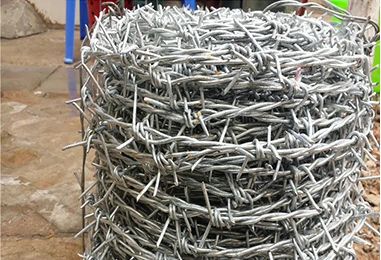 TEL:
+86-13102802206
TEL:
+86-13102802206
 Email:
fencenetting@china.com
Email:
fencenetting@china.com
 Language
Language
 TEL:
+86-13102802206
TEL:
+86-13102802206
 Email:
fencenetting@china.com
Email:
fencenetting@china.com
 Language
Language


Understanding Lockwire A Critical Component in Engineering Safety
Lockwire, also known as safety wire, is an essential component used in various engineering and manufacturing industries to ensure the safety and reliability of mechanical assemblies. Though it may seem like a simple and unassuming material, its role in preventing critical failures cannot be underestimated. In this article, we delve into what lockwire is, its applications, and the best practices for using it effectively.
What is Lockwire?
Lockwire is a thin, flexible wire made from materials such as stainless steel or other alloys known for their strength and corrosion resistance. Typically, it is used in conjunction with bolts, nuts, and other fastening components to secure them in place. The main purpose of lockwire is to prevent loosening due to vibrations, thermal expansion, or other dynamic forces acting on the assembly.
Lockwire is often employed in high-stakes environments, including aerospace, automotive, and industrial machinery sectors. Given the critical nature of these applications, ensuring that components remain tight is paramount to avoiding catastrophic failures.
Applications of Lockwire
1. Aerospace Industry Lockwire is widely utilized in the aerospace sector to secure fasteners on aircraft components. Due to the high-speed and high-altitude nature of aviation, vibrations and temperature fluctuations can cause fasteners to loosen if not adequately secured. Lockwire provides an added layer of assurance that vital components remain intact during operation.
2. Automotive Sector In the automotive industry, lockwire can be found in a variety of applications—from securing components in the engine bay to fasteners on the braking system. Given the dynamic environment in which vehicles operate, the reliability provided by lockwire is essential for safety and performance.

3. Industrial Machinery Many industries utilize lockwire for equipment that experiences significant vibrations or movement. Machinery in manufacturing plants, mining, and construction sectors often employs lockwire to prevent disruptions that could lead to downtime or accidents.
Best Practices for Using Lockwire
1. Choosing the Right Wire When selecting lockwire, it is crucial to choose the appropriate gauge and material for your specific application. Factors such as load, environment, and exposure to chemicals should be considered to ensure optimal performance.
2. Proper Installation Ensuring that lockwire is correctly installed is vital. It should be threaded through the fastener holes and twisted in a manner that creates tension without compromising the integrity of the wire. The wire must not be overly tight, as this can cause undue stress on the fasteners.
3. Inspection and Maintenance Regular inspection of lockwired components is critical. Over time, lockwire can experience wear and corrosion, particularly in harsh environments. Regular checks help identify potential issues before they lead to component failure.
4. Adherence to Standards Many industries have specific regulations and standards pertaining to the use of lockwire. Compliance with these standards is not only a best practice but also a legal necessity in many cases.
Conclusion
In conclusion, lockwire may be a small component, but its significance in ensuring the safety and integrity of mechanical assemblies cannot be overstated. From aerospace to automotive to industrial applications, this simple yet effective solution plays a crucial role in preventing component failure due to loosening. By understanding its applications and adhering to best practices, engineers and technicians can significantly enhance the reliability of their systems, ultimately contributing to safer and more efficient operations. As industries continue to evolve, the need for reliable fastening solutions like lockwire will remain imperative in engineering practices around the globe.